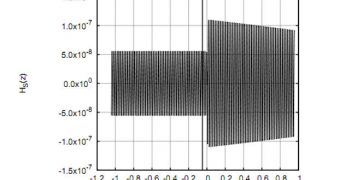A group of Russian physicists announces the creation of a new communications method that ensures mission control can remain in constant contact with spacecraft reentering Earth's atmosphere. The way this is done is by making a giant radio receiver out of a plasma sheath.
The communications blackout problem affects spacecraft such as the American shuttles when they reenter Earth's atmosphere. For a few minutes, radio control with mission controllers is lost, due to interferences that form as the orbiters make their way through the upper layers of the atmosphere.
Similar issues affect hypersonic planes, which travel incredibly fast, and whose communications are also jammed in a way when they are traveling at full speed. Thanks to the new technique, it may become possible to keep in touch with such instruments at all times.
Generally, physicists explain, communications break down when things are traveling at speeds of between Mach 8 and 15. When this happens, molecules in the atmosphere are heated and broken apart by the hypersonic aircraft or spacecraft.
A plasma then forms around the moving object, enveloping it like a sheath, and preventing radio signals from passing through, Technology Review reports.
Over the years, solutions for fixing this problem have included mounting antennas on the nose of spacecraft, designing the entire thing around the communications system, or using different types of signals. None of these solutions is however optimal.
But now physicist Aleksandr Korotkevich, who is based at the Landau Institute for Theoretical Physics, in Moscow, proposes a new way of bypassing the communications blackout.
The Russian group, taking inspiration from judo wrestling, says that scientists should strive to use the plasma sheath in their favor, rather than try to defeat it. The team even provided a little walk-through on how a plasma antenna would work,
According to the laws of physics, electromagnetic waves (such as radio signals) are both reflected and absorbed by the plasma. The signals gather at some point within the plasma, which in effect acts as an antenna. The issue is that, regularly, it cannot move beyond that point.
The solution Korotkevich proposes is zapping this particular plasma layer with radio signals from the spacecraft itself. These signals would get reflected and absorbed partially as well, and some of them will return to their point of origin.
But these signals will not be the original ones sent by the shuttle or spacecraft, but rather signals that have been modulated by the surface signals trapped in the middle of the plasma sheath.
This finding is bound to raise some interest, especially in astronomical and military circles. Ballistic missiles and hypersonic attack planes are not the type of assets you want to lose control over, especially when they might carry nuclear armament.

 14 DAY TRIAL //
14 DAY TRIAL //